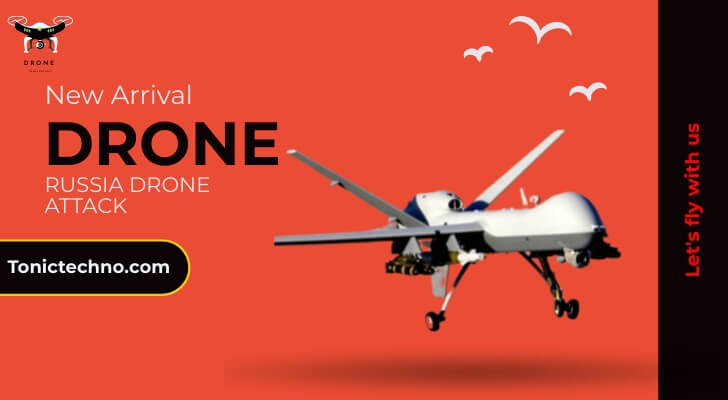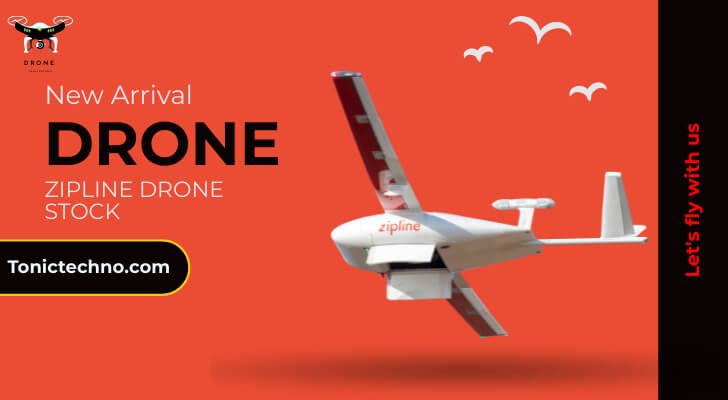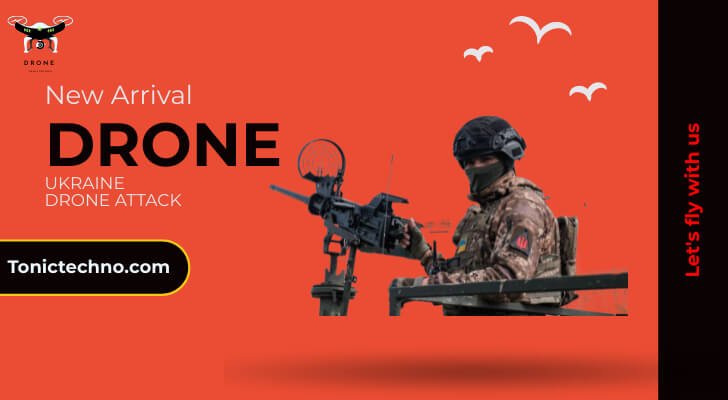Ah, the Russia drone attack—a topic that thrusts us into the realm of modern warfare’s most clandestine and chilling episodes. Let me take you on an experience that remains etched in my memory. As someone who has delved deep into the intricacies of geopolitical tensions, I find this incident to be a stark reminder of the evolving face of conflict. Join me as I unravel the layers of this enigmatic event, exploring its repercussions and the unsettling questions it raises about the future of warfare—strap in, dear reader, for a ride into the heart of geopolitical intrigue.

Background of Russia’s Drone Technology
Let’s dive into the intriguing world of Russian drone technology, where innovation meets military prowess.
Development and Deployment of Russian Drones
Russian drones have come a long way since their inception, evolving from rudimentary surveillance tools to sophisticated weapons systems. Fueled by government investment, the country’s defence industry has played a pivotal role in developing these uncrewed aerial vehicles (UAVs). From reconnaissance drones like the Orlan-10 to combat drones like the Forpost and the recently unveiled Okhotnik, Russia boasts a diverse array of UAVs tailored for various military applications. These drones have been actively deployed in conflict zones, showcasing Russia’s growing prowess in unmanned warfare.
Evolution of Russia’s Drone Warfare Tactics
As Russian drones have evolved, so too have the tactics employed in their usage. Initially utilised primarily for reconnaissance purposes, Russian drones have now been integrated into offensive operations, capable of effectively carrying out precision strikes. The integration of artificial intelligence and advanced targeting systems has enhanced the capabilities of these drones, enabling them to operate autonomously and adapt to dynamic battlefield conditions. Moreover, Russia has been experimenting with swarming tactics, deploying multiple drones simultaneously to overwhelm enemy defences. This evolution in drone warfare tactics underscores Russia’s commitment to leveraging cutting-edge technology to maintain its military superiority.
Context Leading to the Russia Drone Attack
Understanding the context leading to the Russian drone attack sheds light on the complex web of political tensions and escalating conflicts in the region.
Political Tensions in the Region
The region where the Russia drone attack occurred has been marred by longstanding political tensions, with various stakeholders vying for control and influence. These tensions often stem from historical grievances, territorial disputes, and geopolitical rivalries, creating a volatile environment ripe for conflict. Additionally, competing interests among regional and global powers further exacerbate the situation, fueling proxy conflicts and power struggles.
Previous Incidents and Escalations
The Russian drone attack did not occur in isolation but rather within the context of previous incidents and escalations in the region. Tensions had escalated gradually due to provocations, skirmishes, and retaliatory actions between the involved parties. These incidents served as precursors to the eventual drone attack, highlighting the underlying animosities and unresolved conflicts that simmered beneath the surface. Moreover, each escalation raised the stakes and intensified the urgency for a diplomatic resolution.
The Russia Drone Attack: Execution
Delving into the execution of the Russian drone attack unveils the strategic objectives and tactical intricacies employed by Russian forces.
Targets and Objectives of the Russian drone attack
The Russian drone attack was strategically aimed at specific targets deemed crucial to achieving military or political objectives. These targets could include enemy infrastructure, military installations, or key personnel. The selection of targets reflects the overarching goals of the Attack, whether it be to degrade enemy capabilities, deter future aggression, or assert dominance in the region. Understanding the rationale behind target selection provides valuable insights into the intentions and motivations driving the Attack.
Tactics and Technology Employed by Russian Forces
Russian forces utilised a combination of tactics and cutting-edge technology to execute the Russian drone attack with precision and efficiency. Tactical considerations such as reconnaissance, surveillance, and intelligence gathering were crucial in planning the operation. Moreover, the use of advanced drone technology equipped with sophisticated sensors, navigation systems, and weaponry enhanced the effectiveness of the Attack. Coordinated manoeuvres, stealthy infiltration, and strategic positioning further underscored the meticulous planning and execution carried out by Russian forces.
Response and Fallout
Introduction: Exploring the aftermath of the Russia drone attack unveils a flurry of responses and reverberations across affected parties and the international community.
Immediate Responses from Affected Parties
Following the Russian drone attack, affected parties swiftly responded with a range of reactions. These responses may include retaliatory measures, such as counterattacks or heightened military readiness, aimed at deterring further aggression and safeguarding national interests. Additionally, affected parties may issue official statements condemning the Attack, expressing solidarity with allies, or calling for international intervention to address the escalating conflict. Understanding these immediate responses provides valuable insights into the conflict’s dynamics and the involved parties’ evolving strategies.
International Diplomatic Repercussions and Security Concerns
The Russia drone attack triggers a cascade of diplomatic repercussions and security concerns on the international stage. Countries worldwide closely monitor the situation, assessing its implications for regional stability and global security. Diplomatic channels are activated as nations engage in dialogue, negotiations, and diplomatic initiatives to de-escalate tensions and prevent further violence. Moreover, the Attack raises broader security concerns regarding the proliferation of drone technology and its potential impact on international security norms and regulations. Addressing these concerns requires concerted efforts from the international community to develop effective strategies for mitigating future risks and promoting peace and stability.
Investigation and Attribution
Unravelling the mystery behind the Russia drone attack involves a meticulous process of investigation and Attribution, fraught with challenges and uncertainties.
Efforts to Identify the Perpetrators
In the aftermath of the Russia drone attack, investigative agencies and intelligence services launched extensive efforts to identify the perpetrators responsible for orchestrating the operation. These efforts may involve gathering intelligence through various means, including surveillance, reconnaissance, and forensic analysis of the attack site. Additionally, collaboration and information-sharing among international partners play a crucial role in piecing together the puzzle and tracing the origins of the Russia drone Attack. However, identifying the perpetrators is often complex and time-consuming, requiring patience, expertise, and access to reliable intelligence.
Challenges and Uncertainties in Attribution
Despite concerted efforts, attributing responsibility for the Russia drone attack poses significant challenges and uncertainties. Using sophisticated tactics, such as false flag operations or proxy actors, complicates the attribution process, making it difficult to definitively pinpoint the culprits behind the Russia drone Attack. Moreover, the lack of transparent communication and conflicting narratives from involved parties further muddy the waters, fueling ambiguity and speculation surrounding the incident. As a result, investigators must navigate through a maze of misinformation and political agendas to uncover the truth behind the Attack, acknowledging the inherent complexities and limitations of the attribution process.
Impact on Civilian Populations
Examining the repercussions of the Russia drone attack on civilian populations sheds light on the humanitarian consequences and infrastructure damage wrought by the incident.
Humanitarian Consequences of the Russia drone attack
The Russian drone attack inflicts severe humanitarian consequences on civilian populations caught in the crossfire. Innocent civilians may suffer injuries, displacement, or loss of life as a result of the Attack, leading to widespread fear, trauma, and suffering among affected communities. Moreover, the destruction of essential infrastructure, such as hospitals, schools, and residential areas, exacerbates the humanitarian crisis, hindering access to vital services and exacerbating the plight of vulnerable populations. Addressing the humanitarian fallout of the Attack requires coordinated efforts from humanitarian organisations, governments, and international agencies to provide aid, shelter, and support to affected civilians.
Civilian Safety and Infrastructure Damage
The Russia drone attack leaves a trail of destruction in its wake, causing extensive damage to civilian infrastructure and posing significant threats to civilian safety. Critical infrastructure, including power plants, water facilities, and transportation networks, may suffer irreparable harm, disrupting essential services and impeding recovery efforts. Moreover, the indiscriminate nature of drone warfare increases the risk of civilian casualties and injuries, as drones may inadvertently target non-combatants or civilian infrastructure during military operations. Ensuring civilian safety and mitigating infrastructure damage require concerted efforts to implement measures such as early warning systems, evacuation protocols, and infrastructure protection initiatives to minimize the impact of future attacks on civilian populations.
Military and Strategic Implications
Analyzing the military and strategic implications of the Russia drone attack provides insights into its far-reaching effects on military doctrines and regional security dynamics.
Effects on Military Strategies and Doctrine
The Russia drone attack prompts a reassessment of military strategies and doctrines in response to the evolving threat landscape posed by uncrewed aerial vehicles (UAVs). Military planners must adapt to the reality of drone warfare, incorporating counter-drone measures, such as jamming systems, anti-aircraft defences, and drone detection technology, into their operational plans. Moreover, using drones in asymmetric warfare challenges traditional notions of battlefield superiority, requiring innovative approaches to military tactics and engagements. This shift in military thinking underscores the need for continuous adaptation and modernisation to address emerging threats in the digital age effectively.
Long-term Security Implications for the Region
The Russia drone attack has long-term security implications for the region, reshaping geopolitical dynamics and altering the calculus of regional actors. The demonstration of drone capabilities in a military conflict sets a precedent for future engagements, potentially fueling an arms race as countries seek to bolster their drone capabilities in response. Moreover, the use of drones blurs the lines between conventional and unconventional warfare, complicating efforts to maintain stability and peace in the region. Addressing these security implications requires multilateral cooperation, confidence-building measures, and diplomatic efforts to mitigate tensions and prevent further escalation of regional conflicts.
Media and Public Reaction
Introduction: Examining the media and public reaction to the Russia drone attack provides insights into the discourse and perceptions surrounding this significant event.
Coverage and Discourse Surrounding the Incident
The Russia drone attack garners widespread media coverage, sparking intense discourse and debate on various platforms. News outlets dissect the incident from multiple angles, analyzing its implications for regional security, international relations, and military technology. Op-eds and commentary pieces offer diverse perspectives on the motives behind the Attack, the identities of the perpetrators, and the potential ramifications for global geopolitics. Social media platforms amplify the discussion, with users sharing news updates, expressing opinions, and engaging in heated debates about the Russia drone Attack and its implications.
Public Perception of Russia’s Role and Responsibility
Public perception of Russia’s role and responsibility in the drone attack varies widely, influenced by factors such as political affiliations, media narratives, and personal beliefs. Some view Russia as the aggressor, holding the country accountable for instigating conflict and destabilising the region. Others may perceive Russia as a victim of external aggression or view the Attack as a justified response to perceived threats. Public opinion polls, surveys, and interviews offer insights into the diversity of societal viewpoints, highlighting the complexity of public perception and the challenges of navigating competing narratives in the aftermath of such incidents.
Diplomatic Efforts and Conflict Resolution
Exploring diplomatic efforts and conflict resolution strategies in the aftermath of the Russia drone attack sheds light on international responses to mitigate tensions and promote peace.
International Calls for De-escalation and Dialogue
In the wake of the Russia drone attack, the international community has called for de-escalation and constructive dialogue to prevent further violence and instability in the region. World leaders, diplomats, and global organisations urge all parties to exercise restraint, refrain from provocative actions, and peacefully engage in meaningful negotiations to resolve underlying grievances. These calls for de-escalation emphasise the importance of diplomacy and conflict resolution mechanisms in addressing regional conflicts and fostering cooperation among nations.
Diplomatic Initiatives to Address Regional Tensions
Diplomatic initiatives are launched to address the root causes of regional tensions exacerbated by the Russia drone attack and facilitate constructive dialogue among conflicting parties. Mediation efforts, peace talks, and diplomatic negotiations aim to build trust, bridge divides, and find common ground for resolving longstanding disputes. International organizations, such as the United Nations and regional bodies, play a crucial role in facilitating diplomatic channels and providing platforms for dialogue and reconciliation. Moreover, bilateral and multilateral initiatives seek to establish confidence-building measures, promote transparency, and strengthen regional conflict prevention and resolution mechanisms.
Future Prospects and Preventative Measures
Introduction Delving into the prospects and preventative measures in the aftermath of the Russian drone attack offers insights into potential developments and proactive strategies to mitigate risks.
Predictions for Future Drone Warfare Dynamics
Experts and analysts forecast the trajectory of drone warfare dynamics in the wake of the Russia drone attack, considering technological advancements, strategic shifts, and evolving military doctrines. Predictions may include:
- The proliferation of drone technology among state and non-state actors.
- The development of counter-drone systems.
- The emergence of new tactics and strategies to exploit the capabilities of uncrewed aerial vehicles (UAVs).
Moreover, forecasts may assess the impact of drones on traditional warfare paradigms and the evolving nature of conflicts in the digital age.
Strategies to Mitigate Risks and Prevent Similar Incidents
To prevent similar incidents and mitigate the risks associated with drone warfare, policymakers and military leaders devise a range of preventative measures and risk mitigation strategies. These strategies may encompass regulatory frameworks governing the use of drones, international agreements to prevent the proliferation of lethal drone technology, and investments in defensive capabilities to counter emerging threats. Additionally, efforts to enhance situational awareness, intelligence-sharing, and early warning systems aim to detect and deter potential drone attacks before they occur. By adopting a proactive approach to drone warfare, stakeholders seek to safeguard security and stability in an increasingly complex and interconnected world.
FAQ
What was the target of the Russian drone attack?
It targeted strategic locations, reflecting evolving military tactics and technological capabilities.
How did the Russian drone attack impact civilian populations?
It caused humanitarian crises, highlighting the indiscriminate nature of modern warfare.
What diplomatic efforts followed the Russian drone attack?
International calls for de-escalation and dialogue aimed to prevent further regional conflict.
What are the long-term security implications of the Russian drone attack?
It reshapes geopolitical dynamics and fuels concerns about regional stability.
How can future drone attacks be prevented?
Strategies include regulatory frameworks, defensive capabilities, and international cooperation to mitigate risks.
Conclusion
The Russia drone attack highlights the intricate dynamics of military technologies, geopolitics, and humanitarian concerns. It emphasizes the necessity for proactive approaches in managing drone warfare challenges. Urgent global cooperation is essential to prevent such incidents, mitigate risks, and promote dialogue. This event underscores diplomacy’s crucial role in maintaining peace and stability amid evolving security threats.


